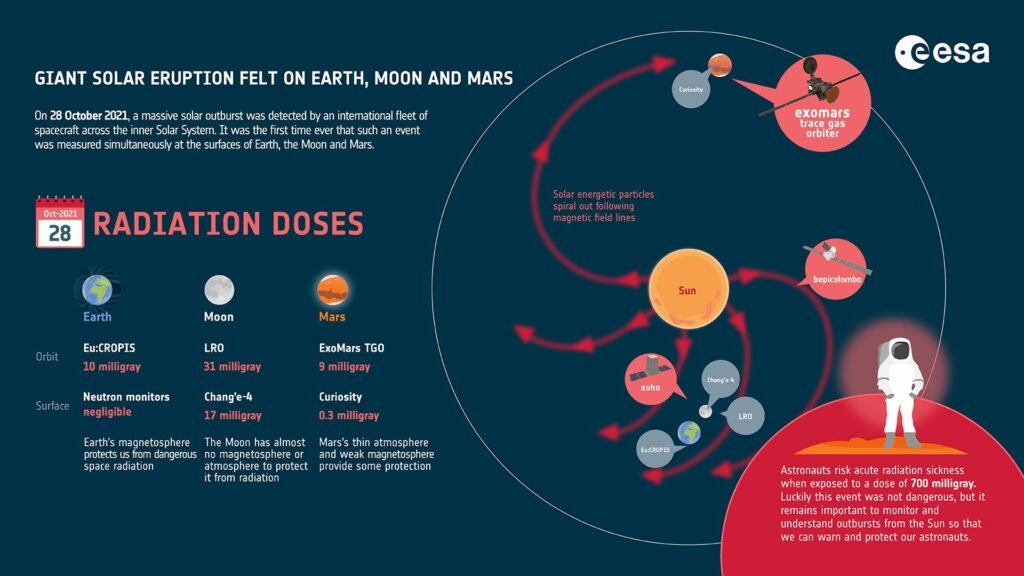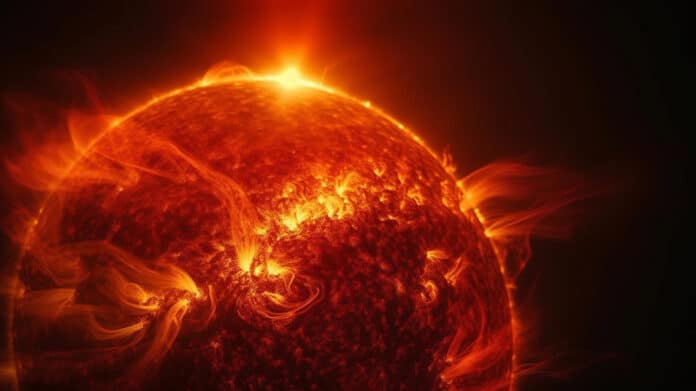On 28 October 2021, solar eruptions caused intense and long-lasting solar energetic particle (SEP) flux enhancements observed by spacecraft located over a wide longitudinal range in the heliosphere. It was the first GLE event of Solar Cycle 25.
The event was spread over such a wide area that Mars and Earth received an influx of energetic particles. This is the first time that a solar event was measured simultaneously on the surfaces of Earth, the Moon, and Mars suggests a new study.

The magnetic bubble surrounding Earth and shields us from less energetic solar outbursts can let through solar particles during these events because they are sufficiently energetic. Since records began to be kept in the 1940s, there have only been 73 ground-level enhancements, which have yet to be noted.
Due to the lack of magnetic fields on the Moon and Mars, solar particles can easily reach their surfaces and even interact with the ground to produce secondary radiation. However, Mars has a thin atmosphere that blocks most solar particles with lower energy and slows down the ones with higher energy.
With the Moon and Mars as the focus of future human exploration, it is essential to understand these solar events and their potential impact on the human body. Astronauts face the risk of radiation sickness.
Scientist Jingnan Guo, who researched the 28 October event, said, “By comparison, during the event on 28 October 2021, the dose in lunar orbit, measured by NASA’s Lunar Reconnaissance Orbiter, was only 31 milligray. Our calculations of the past ground-level enhancement events show that, on average, one event every 5.5 years may have exceeded the safe dose level on the Moon if no radiation protection had been provided. Understanding these events is crucial for future crewed missions to the surface of the Moon.”
The protection provided by Mars’ atmosphere is evident when we compare the data taken by ExoMars TGO with the Curiosity rover. TGO measured 9 milligrays, which is 30 times higher than the 0.3 milligrays detected on the surface.
Journal Reference:
- Jingnan Guo, Xiaolei Li et al. The First Ground Level Enhancement Seen on Three Planetary Surfaces: Earth, Moon, and Mars. Geophysical Research Letters. DOI: 10.1029/2023GL103069
